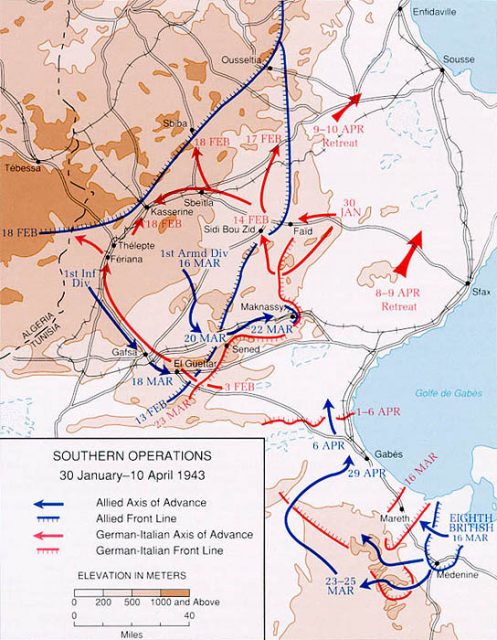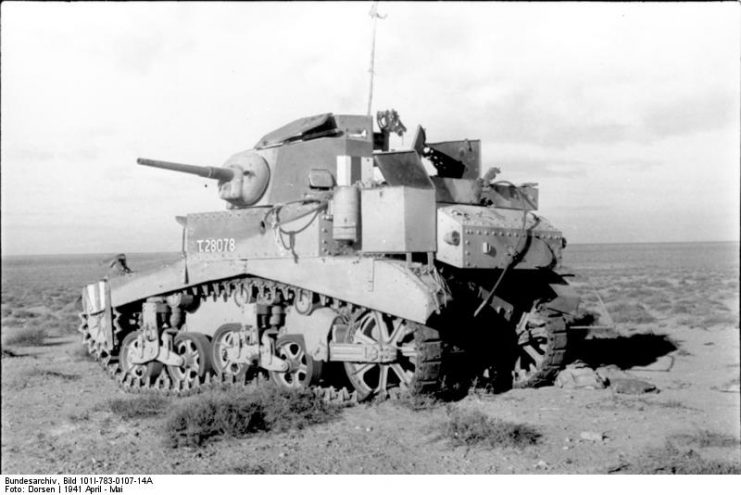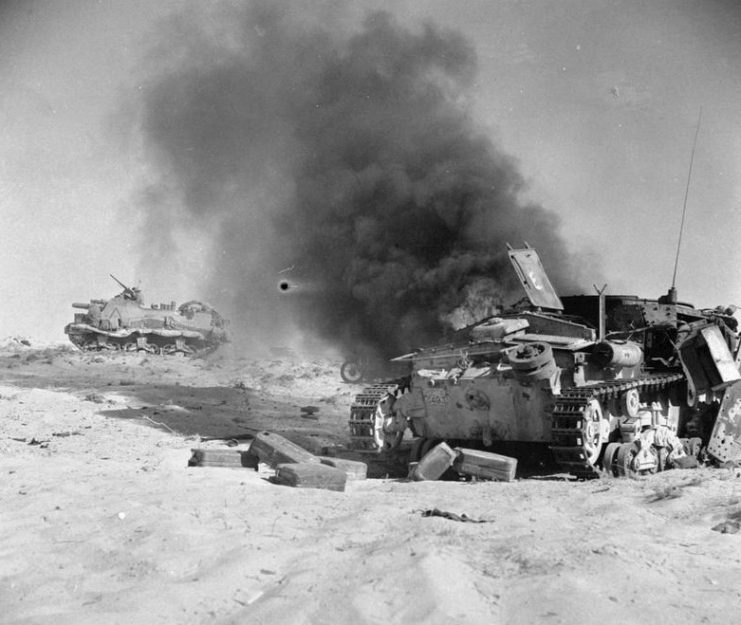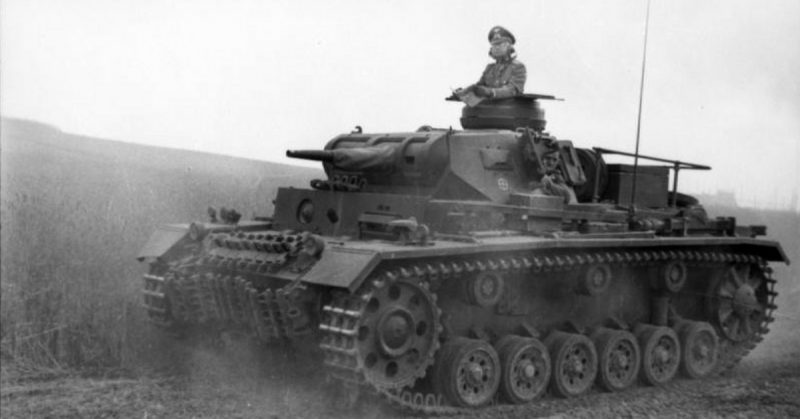On February 14, 1943, a force of American soldiers received the worst Valentine possible. Around the Tunisian village of Sidi Bou Zid, the Germans launched an attack that sent the Americans reeling.
In among the chaos of that day, there were stories of courage and cunning.
Sidi Bou Zid
In February 1943, Tunisia witnessed some of the fiercest fighting then taking place in WWII. Allied forces were advancing on the Axis troops from both east and west, while the Italians and Germans clung tenaciously on.
Sidi Bou Zid was a small village in the vast expanse of the desert. Normally it was an obscure place, but it sat near the end of the Faïd pass, one of the routes through the mountains dividing Tunisia.
The Allies held the village. The Axis wanted it back.
Operation Spring Breeze
Operation Fruehlingswind (Spring Breeze) was conceived as a limited offensive. Rommel was preoccupied pulling his troops back into Tunisia, regrouping from the American creation of a second front.
There was a real danger for the Axis forces that they would be split in two by an Allied strike east to the coast near Tunis. Spring Breeze was meant to counter that risk. Five columns of armored Panzer troops were assembled under Major General Heinz Ziegler. They were to attack early on February 14 to capture Faïd Pass and Sidi Bou Zid. They were instructed not to advance further west. Hopefully, their plan would disrupt the Allies, giving the Axis the initiative.

Launching the Attack
On the night of February 13, Italian troops entered Faïd Pass. Under cover of darkness, they cleared mines and laid dim lights to guide the German tanks.
By 4:30 the next morning, the tanks were on the move. The largest concentrations advanced through a sandstorm from the east, along and around the Pass. Others advanced from the south, hoping to cut off the Americans and surround some of their formations.
At 6:30 they emerged and engaged American troops. Rather than get bogged down fighting the first opponents they met, the veteran Major Hudel led his formation straight on through the American 168th Infantry, leaving them for the German infantry to sort.
The Sound of Shooting
It was classic Panzer tactics, hitting hard and fast to take the enemy by surprise.
It worked. The first many American officers knew of the attack was when they heard the sound of shooting drifting towards them. When they looked to see what was happening, they saw the whole area swarming with German tanks.
Groups of American soldiers were quickly surrounded. A patrol sent to scout out the pass ended up in the wrong place and then had its lead tank destroyed.

Tank Fighting
Hudel’s first real opposition came from a group of American tanks commanded by Colonel Hightower.
Both men worried about the potential of their enemy. Hudel knew the American Sherman tank could punch through the armor of most of his vehicles. Hightower saw that he was outnumbered and his opponents included several new Tiger tanks with powerful 88mm guns.
A more experienced commander leading more experienced men, Hudel avoided the mistake of a head-on attack against the Americans. Instead, he split his formation and approached them from several directions, using dust clouds for cover. His attack was devastatingly effective, destroying the first group of tanks that stood in their way.
Hightower began a fighting retreat. He did the best he could to buy his comrades time.
Drake Takes Charge
On the other side of Sidi Bou Zid, Colonel Thomas Drake was struggling with the fog of war. His superior, General McQuillin, had withdrawn from his position, leaving Drake in charge. It contradicted their earlier decision not to try to retreat during daylight. It also led to a breakdown in lines of communication.
Drake took charge of fighting west of Sidi Bou Zid, sending out scouts to see what the Germans were doing. Around 2 pm, he wrote a report on the only paper he could find, rough British toilet paper, and sent it to his superiors. He advised they were surrounded. Their only hope was the arrival of reinforcements, but they would hold on as long as they could.
Djebel Lessouda
Meanwhile, Major Bob Moore was sitting high on the slopes of a mountain named Djebel Lessouda, along with his infantry battalion from the 168th Regiment. He watched helplessly as tanks overran Allied artillery and infantry below. At that distance, he could not tell friend from foe. When the fighting was close enough to tell the difference, his troops attacked the Germans with mortars. For the most part, they sat tight, laying mines and hoping for the best.

Retreat
At noon, Hightower broke off his fight with the Germans and retreated to Sidi Bou Zid. Seeing that he could not hold there, he ordered his men to continue the retreat west. They did their best to maintain a fighting withdrawal. It showed in their casualties; of the 51 tanks under Hightower’s command, only seven made it out.
Hightower’s command tank was one of those lost. A German shell went through the gas tank, but by a stroke of luck did not immediately ignite it. The crew escaped just before the vehicle exploded in flames.
Walking across the desert, Hightower made it back to Allied lines.
Regrouping
By half-past three, the American troops were all isolated, on the run, or destroyed. Operation Spring Breeze had been a decisive success.
To the disappointment of the more aggressive Rommel, Ziegler stuck to the plan and stopped. The Germans held Sidi Bou Zid for a while, but the Americans regrouped and struck back.
For men like Major Moore, stuck up a mountain surrounded by enemy tanks, it had been a terrible Valentine.
Source:
Orr Kelly (2002), Meeting the Fox: The Allied Invasion of Africa, from Operation Torch to Kasserine Pass to Victory in Tunisia
